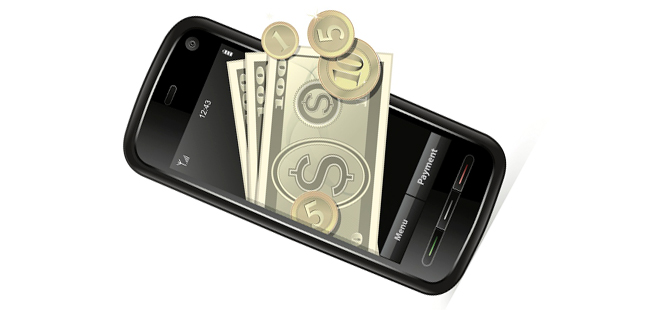 Last year, I wrote an article for VentureBeat about how mobile phones and near field communication (NFC) technology could enhance the payments experience. I included a couple of important caveats:
Last year, I wrote an article for VentureBeat about how mobile phones and near field communication (NFC) technology could enhance the payments experience. I included a couple of important caveats:
- NFC technology, in and of itself, is not compelling enough to change consumer behavior away from using credit cards and cash.
- Credit cards have an install base with consumers and merchants that NFC will not see for years.
Has anything changed over the past year? Certainly, there are an increasing number of NFC enabled phones on the market. Although, according to The Yankee Group, less than one percent of all phones shipped in 2011 included NFC. When you consider that there are more than 6 billion mobile phone subscribers in the world, there is obviously some significant ground left to cover with consumers.
What about the merchants? There are more than 6 million merchants in the U.S. that accept “traditional” payment methods, while only 150,000 are equipped to accept NFC payments, according to recent figures from Crone Consulting. Of course, this isn’t terribly surprising, as upgrading merchants’ terminals to accept NFC (called “merchant reterminalize”) is a lengthy and expensive process that includes installation of new hardware and software, as well as the retraining of staff on how to use the new checkout system.
Think of consumers and merchants as two circles in a Venn diagram, with the intersection representing when a consumer with an NFC enabled device happens to find a merchant that accepts NFC payments. The overlap is incredibly small. This isn’t meant to say “NFC will never change the way we pay,” simply that it isn’t here yet.
Given both the incredible potential presented by mobile payments at the point-of-sale and the significant adoption challenges facing the technology, we are left with this question: “Why are we waiting for so many friction-laden events to happen?” Or, put another way, “Why are we waiting on NFC to deliver mobile payments with real value to merchants and customers?”
Smarter phones. Smarter cards.
No matter how long it takes to realize the potential of NFC, for the foreseeable future we know that most consumers are going to leave the house with two things: their phones and their wallets (likely with at least one card in them). This creates an incredible opportunity to completely change the customer experience of the card-holder by creating an immediate interaction point between consumer, merchant, and a host of value-adding apps.
The true power of mobile payments lies not in separating the card from the phone, replacing the card with the phone, or letting the card live inside the phone, but rather in using the apps, SMS, GPS, HTML5, web capabilities, and a host of other mobile technologies to enrich the consumer’s experience no matter how they choose to pay.
When credit cards were first introduced, they were seen as “cash killers” and sold to customers on the idea that they would no longer need to carry around clunky cash or watch a teller slowly count out correct change. For merchants, the original value proposition of credit cards was they would increase the number of customers who would pay and the transactions made by consumers. Despite the fact that there are over 30,000,000 credit card acceptance locations, and despite its value, the card is seen as something of a “tax” to merchants, and governments are even stepping in to decrease this “tax”.
How to make phones catch on for payments
How do we change this dynamic and restore the value proposition of cards for merchants and customers by using the technology embedded in phones? We’ve examined this problem closely and believe there are a few guiding principles that any mobile payments provider should adhere to in order to deliver the best possible solution for merchants and consumers:
1. Deliver real value, above and beyond tap vs. swipe: The phone in your pocket can do so much to change the way consumers and merchants interact and communicate with each other before, during, and after the purchase. From giving consumers real-time spending alerts and budget controls, to allowing merchants to create highly targeted (even geo-fenced) marketing campaigns that send deals and rewards directly to a mobile device. Consumers look at their phone 150 times per day on average, according to Nokia’s 2010 MindTrek study. There is no limit to what the future may hold for mobile payments. We actually included all of these value-added services in our Accounts product, with many more in development.
2. Don’t force the world to reterminalize: A critical characteristic of any merchant offer platform in this system is that it must require no hardware, software or infrastructure modifications at either the merchant POS or the acquirers’ processing systems. With less than 1 percent of all merchants locations currently accepting NFC payments, building a mobile payments solution that requires NFC acceptance is a long, expensive uphill battle. One solution is to combine NFC technology with an established, card-based payment system.
3. Go to the customer, don’t force them to come to you: By “go to the customer” I really mean “work with partners to leverage existing user bases.” Whether that partner is a mobile carrier or a bank with hundreds of millions of subscribers, it will always be preferable to work with that partner and give them an easy solution that they can immediately distribute to every one of their customers rather than forcing customers to pick up a new phone, a new case, a new app, or any other high-friction behavior in order to use your service.
The Bottom Line
The payments industry is witnessing more innovation, and in some cases creative destruction, than in the previous 10 years. Change is coming rapidly and, as is the case with most products and services, delivering real value to merchants and their customers must be the primary focus (offers, control, communication, etc.).
As an industry, we can and should be proactive in bringing the value of mobile payments into every transaction today, not five years from now. The tools, the networks, and the customers are already there, we just need to tap into what’s here while still building for what’s coming to deliver the best payments experience.
 Ron Hirson is the President and co-founder of BOKU. Ron brings over fourteen years experience in product and general management in the consumer Internet space to the BOKU team. Prior to joining BOKU,Ron served as VP of Product at AT&T Interactive, VP of Product Management at Ingenio, and was co-founder and CEO of The Digs Network.
Ron Hirson is the President and co-founder of BOKU. Ron brings over fourteen years experience in product and general management in the consumer Internet space to the BOKU team. Prior to joining BOKU,Ron served as VP of Product at AT&T Interactive, VP of Product Management at Ingenio, and was co-founder and CEO of The Digs Network.
![]() VentureBeat is holding its second annual Mobile Summit conference this April 2-3 in Sausalito, Calif. The invitation-only event will debate the five key business and technology challenges facing the mobile industry today, and participants — 180 mobile executives, investors, and policymakers — will develop concrete, actionable solutions that will shape the future of the mobile industry. You can find out more at our Mobile Summit site.
VentureBeat is holding its second annual Mobile Summit conference this April 2-3 in Sausalito, Calif. The invitation-only event will debate the five key business and technology challenges facing the mobile industry today, and participants — 180 mobile executives, investors, and policymakers — will develop concrete, actionable solutions that will shape the future of the mobile industry. You can find out more at our Mobile Summit site.
VentureBeat's mission is to be a digital town square for technical decision-makers to gain knowledge about transformative enterprise technology and transact. Learn More
